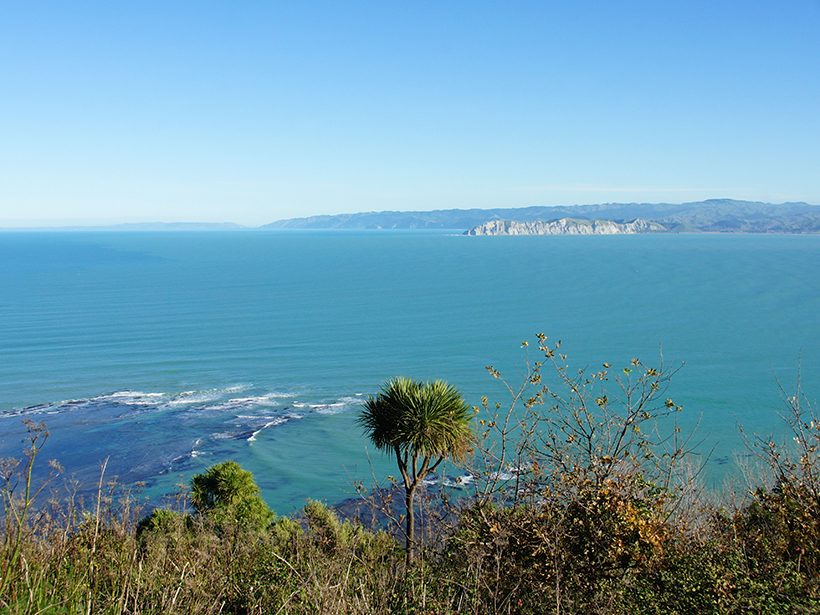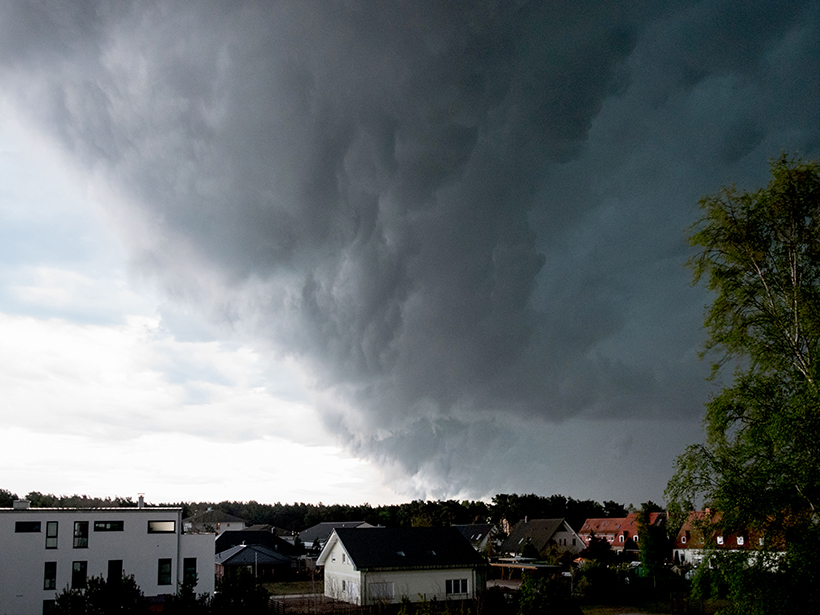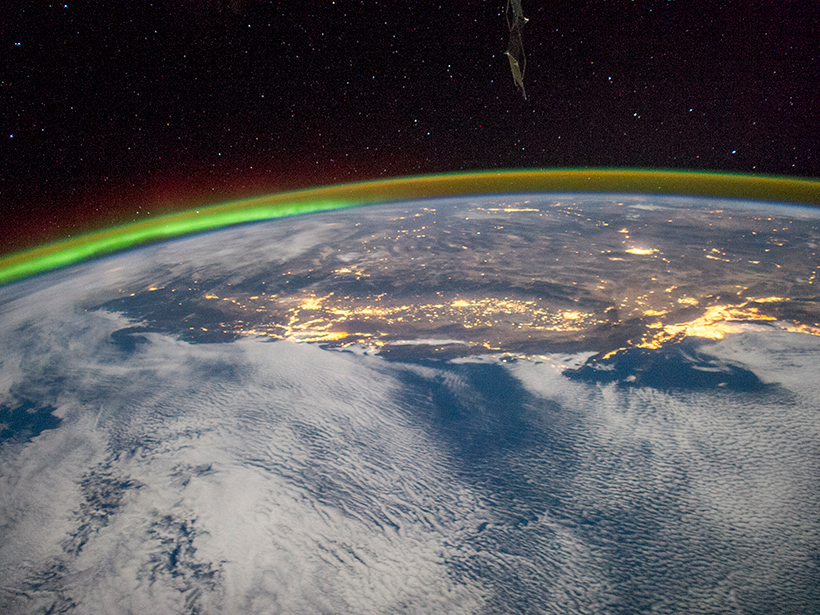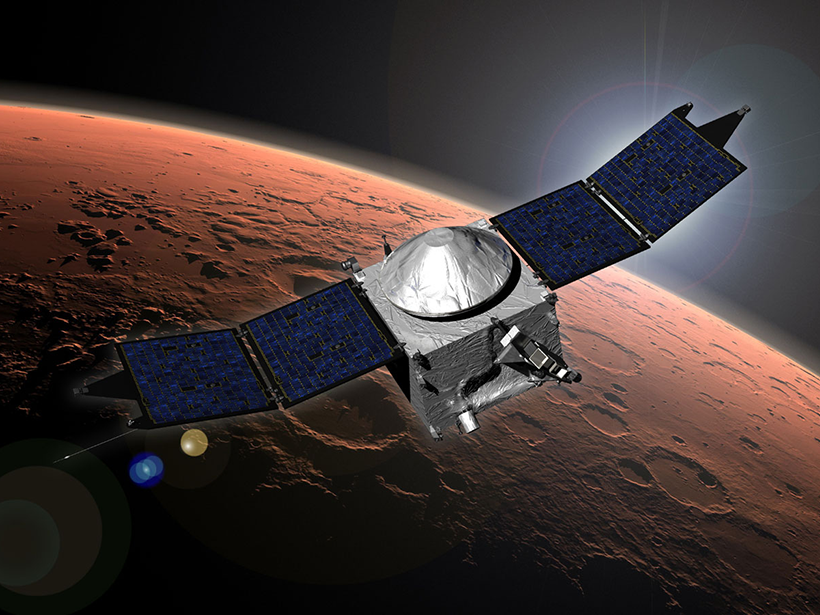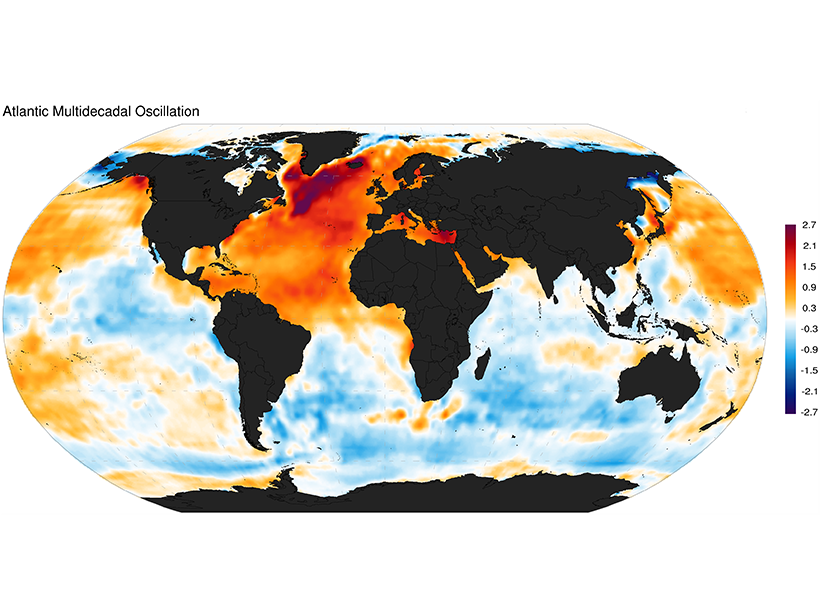Researchers create a first-of-its-kind image to map electrical properties of rocks and minerals throughout the Hikurangi subduction zone.
Research Spotlights
Research spotlights are plain-language summaries of recent articles published in AGU’s suite of 24 journals.
How Earth’s Outer Radiation Belts Lose Their Electrons
A new analysis of three space storms reveals the mechanisms of particle loss from the Van Allen belts.
The Microphysics of Squall Lines
Scientists tracked the distribution of raindrops of different sizes as a row of thunderstorms formed by a cold front developed and intensified over eastern China.
Is There a Greenhouse Effect in the Ionosphere, Too? Likely Not
Controversial observations of long-term changes in the ionosphere appear to be explained by the Sun’s 11-year cycle of activity, not human greenhouse gas emissions.
How Do Clouds React to Regional Warming?
Researchers illuminate how and why cloud feedbacks depend on spatial patterns of global warming.
Angles of Plasma Ropes near Mars Point to Different Origins
Variation in the orientation of flux rope features in Mars’s magnetotail suggests that some of them form on the planet’s Sun-facing side and travel to the night side.
Summer Rainfall Patterns in East Asia Shift with the Wind
Decades of data reveal the link between westerly winds and year-to-year changes in monsoon rainfall.
Probing the Cusps of Saturn’s Magnetic Field
Data from the Cassini spacecraft show that the cusp regions of Saturn’s magnetic field—where it connects to the Sun’s magnetic field—have similarities to Earth’s and also intriguing differences.
Ocean Dynamics May Drive North Atlantic Temperature Anomalies
A new analysis of sea surface temperature and salinity over several decades seeks to settle the debate on which of two mechanisms underlies the Atlantic Multidecadal Oscillation.
North American Wild Rice Faces Sulfide Toxicity
Researchers have developed a model to inform the regulation of sulfate levels in freshwater environments that are threatening the iconic plant.

